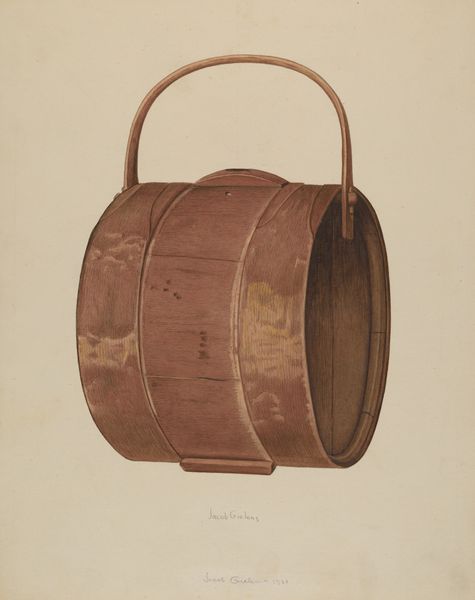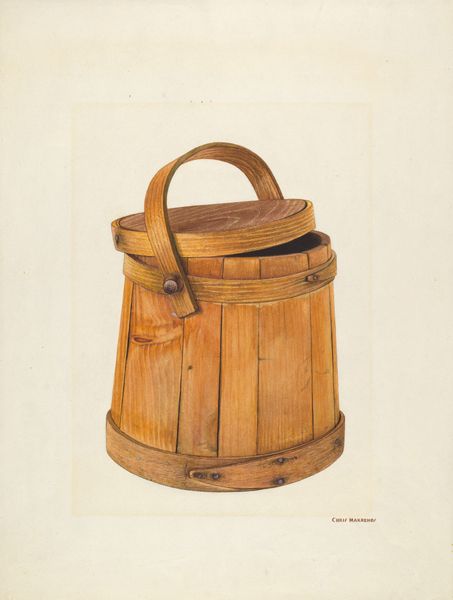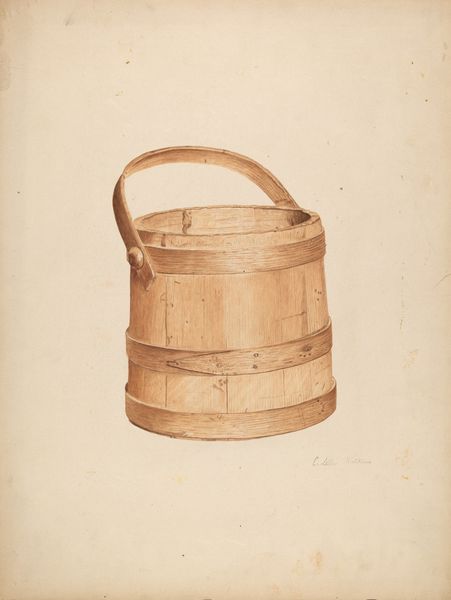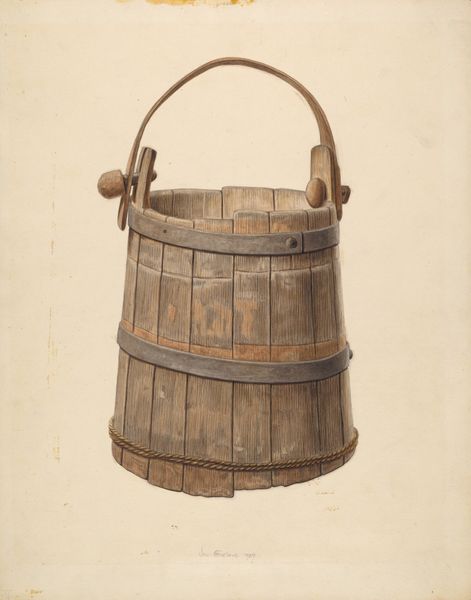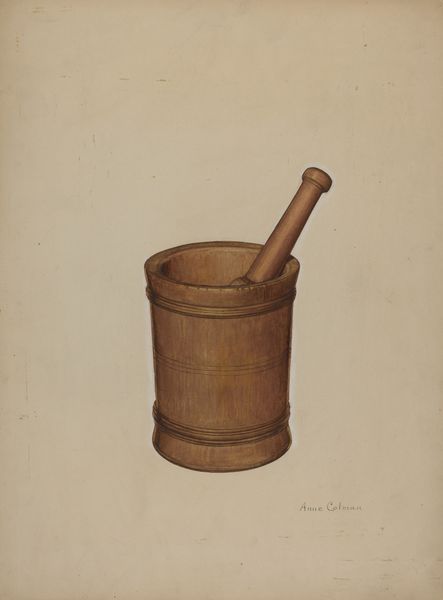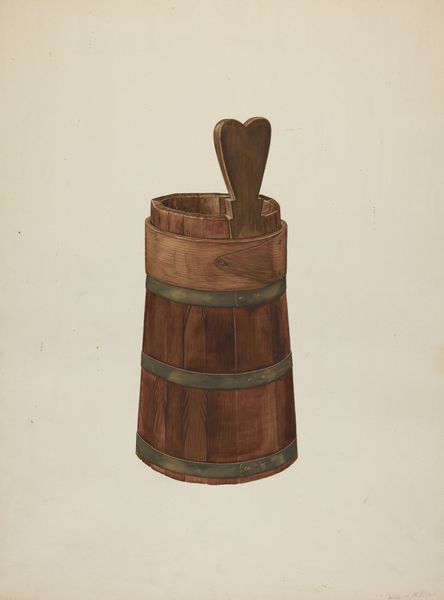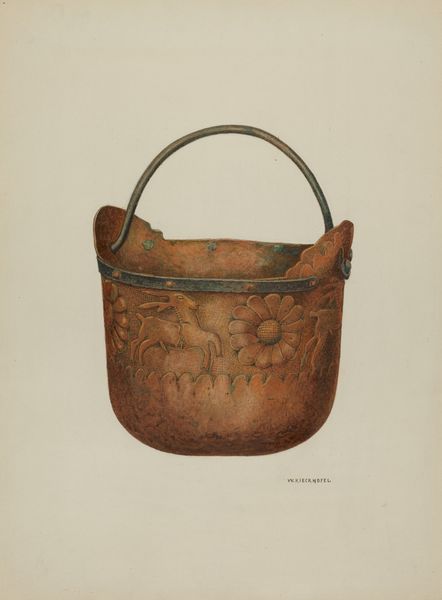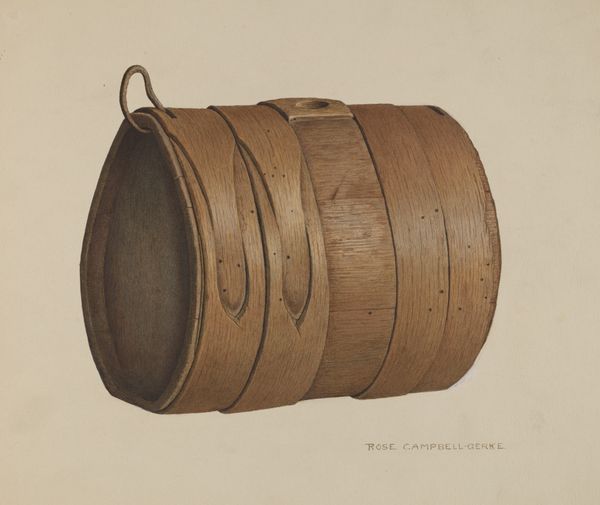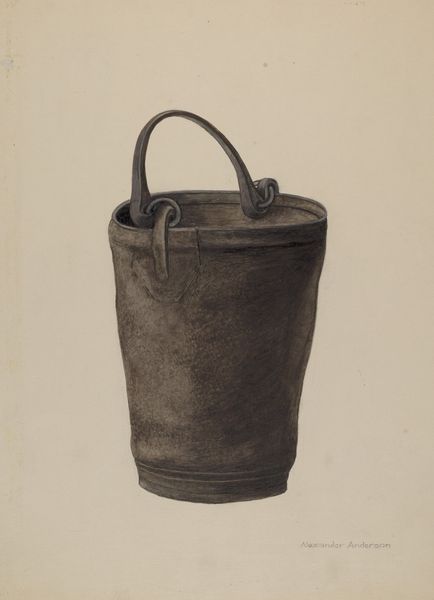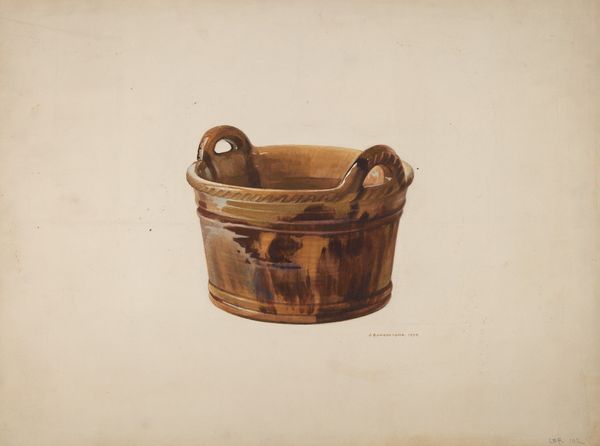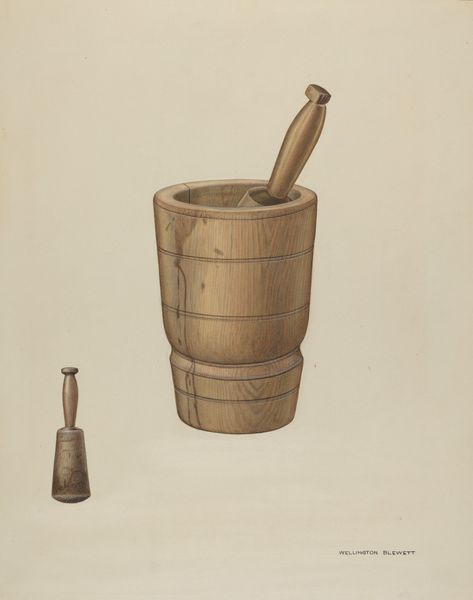
drawing, pencil
#
drawing
#
pencil
#
realism
Dimensions: overall: 36.7 x 29.2 cm (14 7/16 x 11 1/2 in.) Original IAD Object: 4 3/4" high; top: 5" in diameter; bottom: 5 1/2" in diameter
Copyright: National Gallery of Art: CC0 1.0
Curator: Let’s consider this artwork, simply titled "Bucket" and created around 1940 by Frank Budash, rendered meticulously in pencil. Editor: It strikes me as so utterly…mundane. The artist has given such focused attention to something usually overlooked, but that itself imbues it with a symbolic potency. It becomes an emblem of labor, of necessity. Curator: Indeed, and note how Budash employs layering and subtle tonal variations within a limited palette to evoke the rough, textural qualities of the aged wood. The very deliberate application of shade lends the piece considerable depth. The bucket's cylindrical shape, defined by those horizontal bands, displays a calculated, geometric composition, creating structured unity. Editor: Those bands feel less about calculated composition, and more about a symbolic layering, marking history, use, time. Every scratch, every knot in the wood tells a tale. Think of the significance of a bucket in so many traditions: life-giving water, a carrier, a vessel, something that’s repeatedly used. A symbol of human utility. Curator: Utility indeed is a focus, and notice how this is depicted in almost pure visual terms—the lines of the pencil following the form flawlessly. And the visual hierarchy reinforces this formal idea by highlighting each functional part equally: each plank, stave and rivet receives near-identical attention in its representation, creating a democratic image of form following function. Editor: While I can't disagree that attention is certainly democratic, but that very conscious and even-handed construction suggests an elegy for craftsmanship perhaps? Consider the contrast it presents to our current world, obsessed with speed and disposability. Curator: Perhaps it is both. A reflection on form and a hint at meaning; this object becomes an eloquent exploration of artistic representation. Editor: Absolutely. It leaves you pondering the silent stories objects carry, echoing our past and subtly influencing our present.
Comments
No comments
Be the first to comment and join the conversation on the ultimate creative platform.
